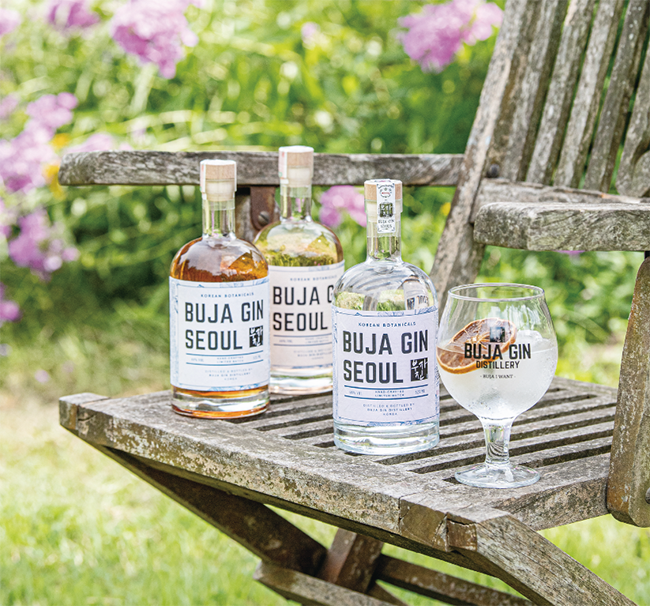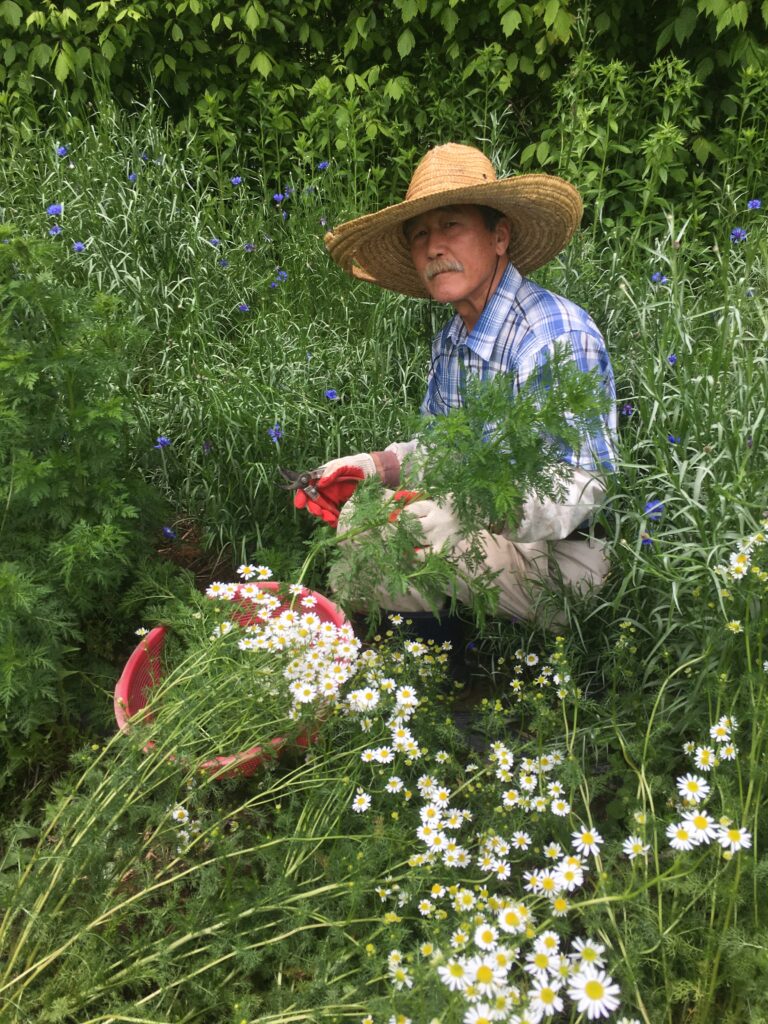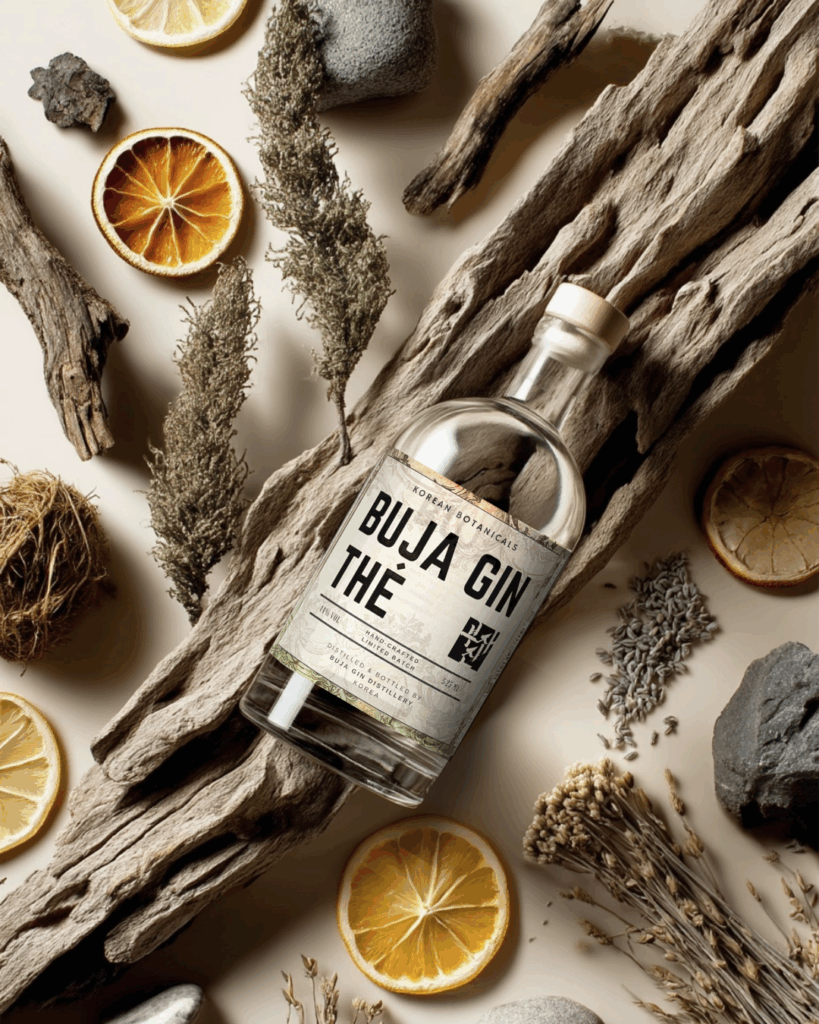Bonding over botanicals to craft Buja, South Korea's first Gin
Inspired by the scarcity of Korean gin, Tom Cho left his finance career while his father retired to an organic farm; together, they bonded over botanicals and gin-making.
10 May 2025
Share this exclusive content from Saladplate

Photo Credit: Buja Gin
When Tom Cho took friends and colleagues out to leading bars in Singapore, he was disappointed that they could not find any gin made in his home country of South Korea, more commonly known for their soju and makgeolli rice-based spirits.
Inspired by the lack of Korean representation in the craft gin world, Tom gave up his career in finance, and at the same time, his father retired to an organic farm, and the pair bonded over botanicals.
Believed to be the first gin made in Korea, Buja (which means father and son in Korean) began production during the pandemic and has a growing range of expressions (15 at the last count) that are fast finding fans in the home market as well as abroad, from Australia to Germany.

Photo Credit: Buja Gin
Producing some 25,000 bottles a year, the gin uses all local botanicals. “When I couldn’t find Korean gin in Singapore, I was keen to know why when we have so many botanicals available,” said Tom. Korea’s distinctive seasons also add to the seasonal appeal of ingredients.
“We spend the morning at the farm, harvest the freshest stalks, and then distill them the same day. We don’t use anything that’s dried. It’s all fresh.”
Photo Credit: TungLok Group

Photo Credit: Buja Gin
While Tom keeps the detailed recipe of his gin close to heart, Korean botanicals give the gin a unique flavour:
Korean pine needles (솔잎): these offer a crisp, resinous freshness with subtle citrus undertones, the taste of the Korean forest..
Baechohyang (배초향): a native variety of Korean mint, it adds a bright, herbal lift with a gentle sweetness that complements the other botanicals.
Doongulae (둥굴레): also known as Solomon’s Seal root, it brings a soft, earthy depth and a hint of natural sweetness, adding complexity to the spirit.
Omija (오미자): meaning “five-flavour berry,” this contributes a harmonious balance of sweet, sour, salty, bitter, and pungent notes, creating a layered and intriguing finish.

Photo Credit: Buja Gin
“These botanicals are not just unique to Korea but also deeply rooted in our cultural heritage, allowing us to craft a contemporary and authentically Korean gin,” he adds.
“I believe our product is outstanding. It’s different from any other gins currently out there because it’s smooth and full-flavoured; it’s a sipping gin. Not many people want to try gin neat. But we are trying to change that concept.”
In Buja’s gins, juniper is more subtle than in many other gins. “All the botanicals kind of co-mingle together to bring out the full flavour,” adds Tom.
Korea’s sea botanicals are also being explored, giving an opportunity to bring a little bit of saltiness to the recipe, along with the natural flavour of the sea.
With a chemical engineering background, Tom runs the distillery, while his father is the botanical expert.
As a craft gin distiller, there is no limitation on how far Buja can stretch. Alongside the 15 expressions, a limited-edition distiller’s cut of around 350 bottles is also produced every year.
“We are always receptive to trends in Korea, although not many people will try to start a trend. But that’s changing; people are trying to make brandy in Korea; I think someone is trying to make Armagnac as well, and also rum, so a younger generation is coming into the spirits business.”

Photo Credit: Buja Gin
As a founding father of the gin movement in Korea, Tom is keen to help other distillers to success. Over the last four years the brand has won several awards across the globe, most recently claiming gold at the 2024 World Gin Awards in the United Kingdom.
“I want to help grow the gin business in Korea as a whole. It makes a difference if there’s a bunch of Korean gin brands overseas; we can create more noise in the global market.”
“If other distillers encounter any issues, I’m more than willing to step in and help them.” But rest assured, he will never give his recipes away.
With such a rich source of raw materials, the possibilities for Buja are endless. So, what’s next? “My dad just bought a mountain and wants to turn it into a Canadian maple tree forest,” Tom smiles.

Photo credit: Buja Gin
Author: Alison Marshall
Alison Marshall is a seasoned journalist, writer, and editor with over 30 years of experience in print and digital media across global markets covering sectors from hospitality to finance. A Brit by birth she has lived in Singapore since 2008, a country which continues to fascinate. In her free time, she enjoys cooking and cocktails and loves a local market wherever she travels.



